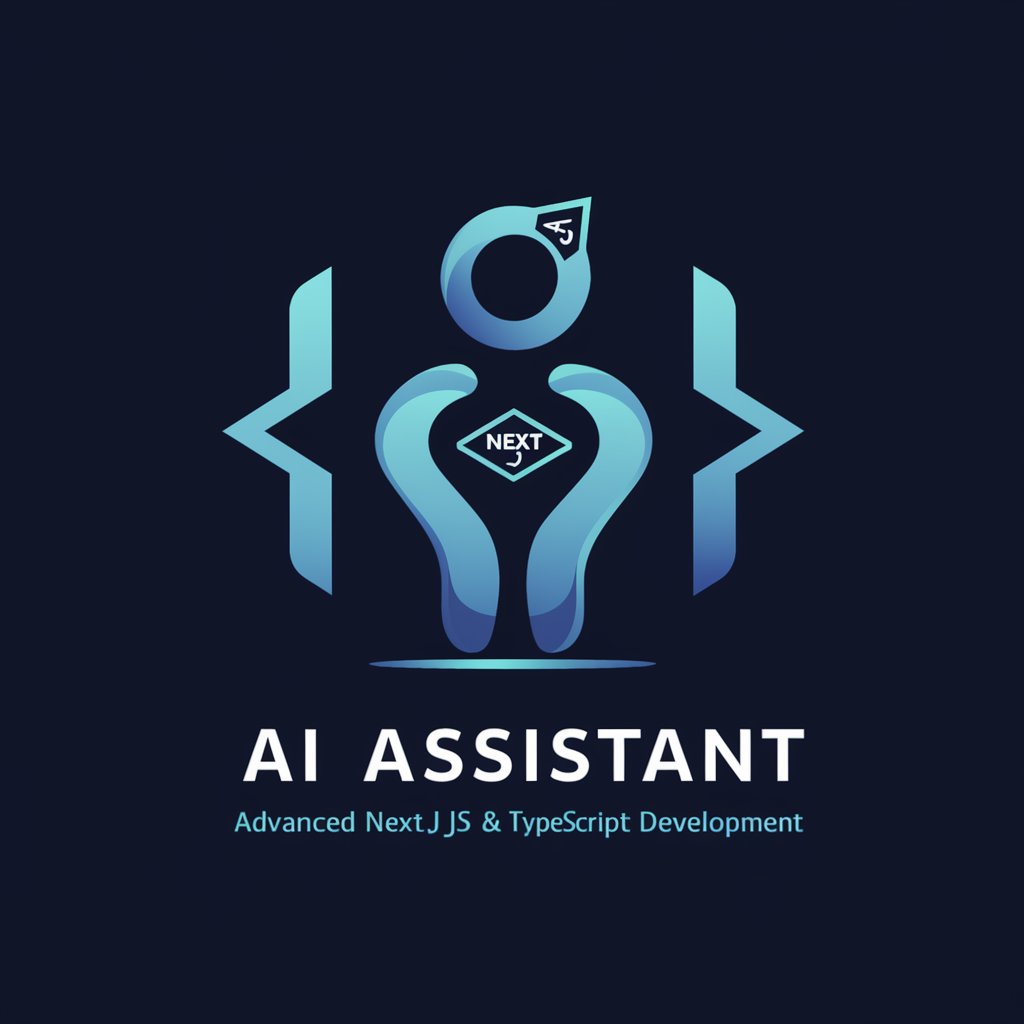
Next.js - Easy Next.js Deployment

Hi! I'm here to help with all your Next.js questions.
Simplify Web Development with AI
How do I set up a new Next.js project?
What are the best practices for optimizing performance in Next.js?
How can I implement dynamic routing in Next.js?
What is the recommended way to handle data fetching in Next.js?
Get Embed Code
Introduction to Next.js
Next.js is a React-based framework that enables functionality such as server-side rendering and generating static websites for React applications. Its primary design purpose is to simplify the process of building performant and user-friendly web applications. Next.js streamlines the development process by providing built-in features like file-based routing, automatic code splitting, and optimized prefetching. A common scenario illustrating Next.js's capabilities is the development of an e-commerce site, where Next.js's server-side rendering feature can significantly improve the site's load time and SEO performance, while its API routes can manage backend processes like handling user authentication and processing payments. Powered by ChatGPT-4o。

Main Functions of Next.js
Server-Side Rendering (SSR)
Example
An online news portal dynamically generates pages for news articles at request time, improving SEO and ensuring up-to-date content is served.
Scenario
Used in content-heavy sites where SEO and initial load time are critical.
Static Site Generation (SSG)
Example
A blog that compiles and generates static pages for each post during the build time, reducing server load and speeding up page load times.
Scenario
Ideal for blogs, marketing pages, and documentation sites with infrequent updates.
API Routes
Example
An application uses API routes to handle user sign-ups, authentications, and other backend functionalities directly within the Next.js app.
Scenario
Suitable for applications that require a seamless integration of frontend and backend within the same project.
Built-in CSS and Sass Support
Example
Enables developers to import CSS and Sass files directly in JavaScript files, facilitating component-level styles and simplifying the styling process.
Scenario
Useful for projects that prioritize component isolation and wish to maintain styles within the same file as the component logic.
Ideal Users of Next.js Services
Web Developers
Developers seeking a robust solution for building fast, SEO-friendly web applications. Next.js's streamlined development experience and built-in features save time and reduce complexity.
E-commerce Sites
Businesses aiming to optimize their online stores for performance and search engine visibility. Next.js's SSR and SSG capabilities can dramatically improve load times and user experience.
Marketing Teams
Marketing professionals looking for a fast, scalable way to deploy landing pages. Next.js allows for rapid deployment and easy updates, making it ideal for marketing campaigns.
Content Creators
Bloggers, journalists, and educators who need a simple, efficient way to publish and manage content. SSG in Next.js provides fast load times and seamless user experience.

Using Next.js: A Concise Guide
1
Initiate your journey at yeschat.ai for a hassle-free trial, bypassing the need for login or a ChatGPT Plus subscription.
2
Install Node.js on your system, ensuring you have the latest version to avoid compatibility issues with Next.js.
3
Create a new Next.js project by running `npx create-next-app@latest` in your terminal, which sets up a boilerplate project.
4
Explore and edit the generated pages inside the `pages` directory to start building your application, utilizing the file-based routing of Next.js.
5
Deploy your Next.js application using Vercel or any other cloud platform that supports Node.js, for optimal performance and scalability.
Try other advanced and practical GPTs
Next React Expert
Unlock AI-powered Next.js and React guidance.

Next Pilot
Empowering NextJS development with AI

next
Empower your tasks with AI precision

NEXT
Powering Market Insights with AI

Next
Distilled wisdom at your fingertips.

JS GPT
Empowering JavaScript Development with AI

Next.js Guru
Elevate Your Web Development with AI-Powered Insights

Next.js
Empower development with AI-driven Next.js insights.

Next.js App Router Assistant
Empowering Next.js Routing with AI

PILOT PILOT
Elevate Your Tasks with AI Power

History Explorer
Bringing history to life with AI

History Helper
Empowering Your Historical Curiosity with AI

In-Depth Next.js Q&A
How does Next.js handle server-side rendering (SSR)?
Next.js pre-renders pages on the server at request time, fetching data and rendering the final HTML to send to the client, improving SEO and performance.
Can Next.js applications be exported as static websites?
Yes, Next.js supports static site generation (SSG). Use `next export` to output your application as static files, suitable for hosting on any web server.
How does file-based routing in Next.js work?
Next.js automatically routes files in the `pages` directory to corresponding URLs. For example, `pages/about.js` becomes `/about`. This convention makes routing straightforward.
What are API routes in Next.js?
API routes allow you to create RESTful endpoints within the Next.js app by placing files in the `pages/api` directory. These are serverless functions that can handle backend logic.
How does Next.js integrate with CSS frameworks?
Next.js supports CSS Modules and styled-jsx out of the box, allowing for component-scoped CSS. It can also integrate with other CSS frameworks like Tailwind CSS via plugins or custom configurations.




